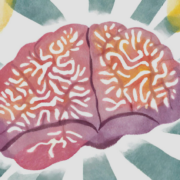What is Social Prescribing and Why is it Important?
By Yasaman Nourkhalaj and Sharon Brock, MEd, MS

Research has shown that social isolation not only negatively impacts our mental health but can also take a toll on our physical health. This association has piqued the attention of healthcare professionals, leading some to participate in social prescribing. Social prescribing is the act of healthcare professionals recommending that their patients put effort into engaging in more social activities, such as reaching out to family members for phone calls, striking up conversations with neighbors, or making coffee dates with friends.
Stanford Medicine psychiatrist Douglas Noordsy, MD, founder of the Stanford Lifestyle Psychiatry Clinic, often recommends social activities to his patients to improve their mental health.
“I take a collaborative approach when working with patients in the lifestyle psychiatry clinic. I educate them on the health benefits of social activities and help them choose which social activities they are motivated to engage in. It’s a shared decision-making process,” says Dr. Noordsy, Stanford Professor of Psychiatry and head of the Stanford Lifestyle Medicine Cognitive Enhancement pillar.
How Do Social Activities Improve Health?
Social connection can improve one’s overall health, well-being, and longevity. This study showed that in those with depression frequent participation in social activities improved metabolic and brain health. A cross-sectional observational study used surveys from people aged 65 and over from 16 different countries to investigate the impact of social connection through hobby engagement. The results showed a reduction in morbidity and healthcare burden, with higher life satisfaction for participants who engaged in their hobby in groups. Researchers from another study expressed how the lack of social connection can be more detrimental to health than common conditions like obesity and high blood pressure.
At the neurological level, there is evidence that experiencing positive social connections releases “feel-good” hormones in the brain, such as oxytocin and dopamine. We also know that physical exercise increases dopamine levels. So, Dr. Noordsy often recommends that his patients improve their health and well-being in a time-efficient way by engaging in physical activity that is also a social activity, such as participating in a team sport or going on a daily walk with a neighbor.
Examples of Social Prescriptions
- A patient with self-doubt or discouraging thoughts may be experiencing some level of depression, which can become more detrimental with isolation. In this case, Dr. Noordsy recommends the patient make an effort to reach out and spend quality time with family and friends.
- A person taking care of their elderly parents at home and isolating themselves from the rest of their community would be advised to go to a coffee shop three times a week to be around a variety of people.
- A remote worker who feels anxious from too much alone time is recommended to work in a public place by going to a café or a shared workspace a couple of times a week.
- Someone who is shy and struggles with communication would be advised to join a local hiking group where communication can happen while walking side by side. This prescription not only promotes social connection, but also physical exercise.
“Each patient is different. During a careful initial assessment with each patient, I assess their current lifestyle behaviors and figure out how to best integrate new lifestyle practices (such as social prescribing) into their lives. I assess which behaviors are problematic for their mental health and which behaviors might be beneficial for this specific individual,” says Dr. Noordsy. “The most important thing about social recommendations is making sure they are tailored to the individual. A person is more likely to engage in social activities of their choosing, and over time, we can track behavior changes and optimize their outcomes.”








